Corner sinks in the bathroom: sizes and recommendations for selection

Bathrooms rarely boast of serious dimensions, most often the area of these premises is rather modest. In order not to clutter up the space visually and physically, it is necessary to choose the most functional and compact furniture and plumbing fixtures. The corner washbasin looks great in both small and large bathrooms, which will stop possible largely due to their unusual appearance and originality.
Modern plumbing manufacturers offer a wide selection of corner models, but in order not to be disappointed in the purchase, many nuances should be taken into account.
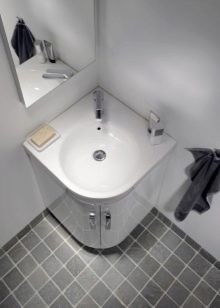
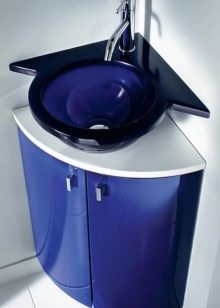
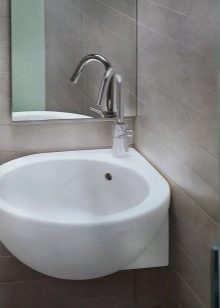
Advantages and disadvantages
A corner sink in the bathroom is considered most often if the area is limited. Such a model does not take up much space along the wall, being very compactly placed in the corner of the room. You can choose a curbstone for it or limit yourself to a pedestal. Mirrors over the sink visually expand the room and add air. These models have a number of advantages:
- washing in it is quite comfortable;
- a curbstone can close all communications, use the space in it for storing detergents;
- by placing such a sink, you free up a lot of space for other items;
- the choice of models, shades, shapes of corner sinks is very large, you can choose them for every taste, style, wallet;
- look very original, enliven the interior;
- fixed on two walls, so the structure is as reliable as possible (provided that the walls are strong).
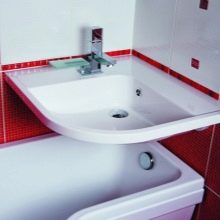
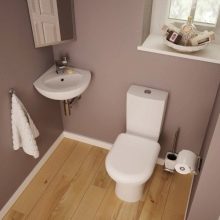
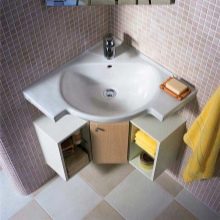
There is only one drawback of this kind of washbasins - two reliable load-bearing walls are required to accommodate them.
Varieties
The models of such washbasins are quite diverse. Almost all plumbing manufacturers have variations of them. The main criterion for the classification of sinks is the installation method.
Suspended sinks. Perfect for a small bathroom, but their disadvantage is open communications. This is a very comfortable view that allows you to use the freed space for installing a washing machine or furniture. The weight of this design is minimal, the installation is simple. To prevent pipes from spoiling the appearance of the bathroom, manufacturers suggest choosing models with decorative communications.
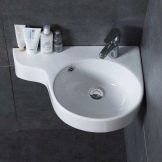
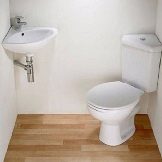
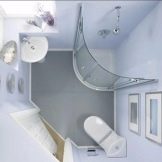

- Tulip shells are the most common. They stand on a faience plinth that hides the pipes, but they have no storage space. The height of the leg, behind which the pipes are hidden, varies from 70 to 80 cm. The pedestal can be quite elegant, the structure itself is practical and reliable. This type of installation is considered ideal for sinks that are large in weight, for example, made of natural stone. Unfortunately, this option does not allow rational use of the space under the sink, that is, use it for storage.
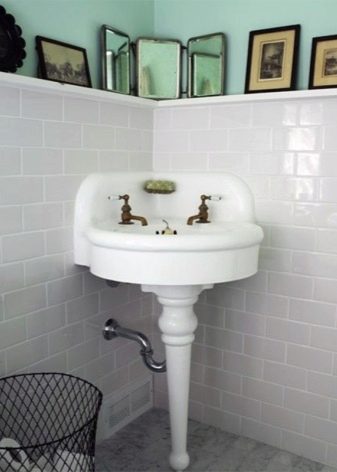
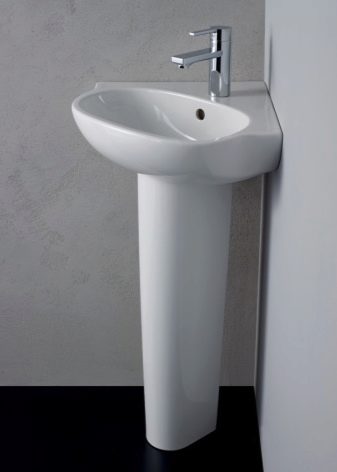
- Embedded models... Allows you to set up storage space, but take up more space than both previous options. This is a practical variation to hide communication. There are quite compact varieties - about 40 cm, which can be put in the tiniest bathrooms. Dimensions can reach 80 and even 100 cm in width. The shape also varies - from classic rounded to asymmetric, their height can be from 75 to 90 cm. Asymmetric models, in turn, are classified according to the location of the elongated side - left or right.
Among this type of sinks, models embedded in the countertop are very common, which can be suspended or built into a cabinet, a decorative type stand.
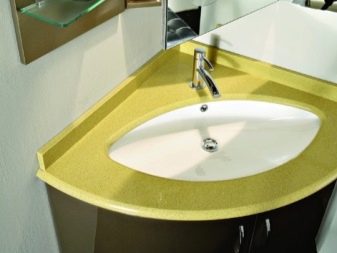
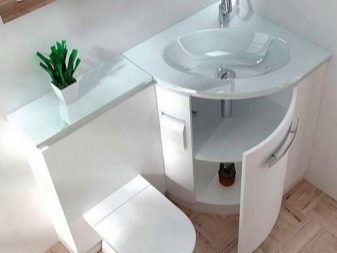
In addition, washbasin models are classified according to:
- sizes;
- form;
- style;
- material of manufacture.
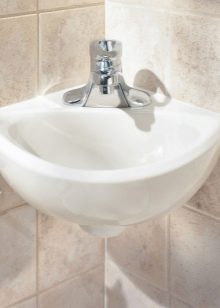
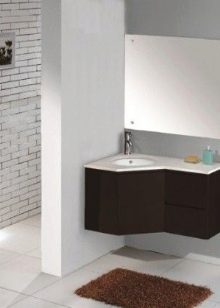
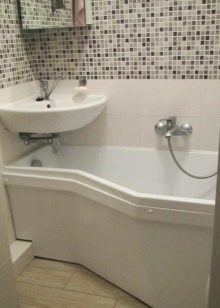
Manufacturing materials
Beautiful appearance and suitable size are insufficient characteristics for purchasing a sink. It is very important to evaluate the positive and negative qualities of the material from which they are made. It depends on him how easy it will be to take care of the plumbing, how strong and reliable it is.
Ceramics. The most popular sinks are made from ceramics - faience and porcelain. The price for them is quite low, they are unpretentious in care. In addition, these models are environmentally friendly and visually attractive. If you have damaged such a sink, the restoration will not be expensive or difficult. Unfortunately, they are rather fragile, any impact or fall of something heavy can break them. In addition, you need to carefully select the means for caring for them, otherwise you can damage the coating, make it porous, and then plaque will form on them very quickly.
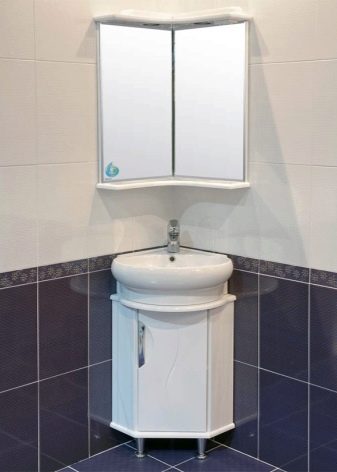
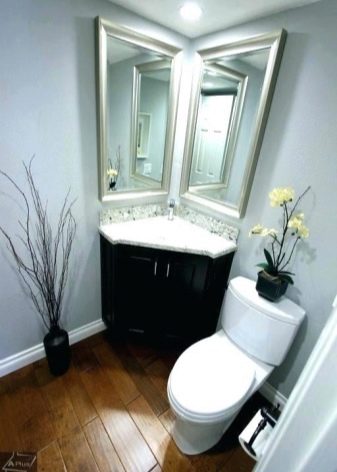
- Metal. This is not a very popular type of plumbing, despite its practicality and durability. These sinks look good in industrial and futuristic styles, and are also suitable for retro. More inexpensive washbasins are made of stainless steel, and elite varieties are made of copper and bronze. This material is not afraid of external influences, it is impossible to split it. It is easy to take care of it, any detergents are suitable for this. But there are also disadvantages - stainless steel is too noisy, and bronze and copper models darken if they are not regularly cleaned with special tools and polished.

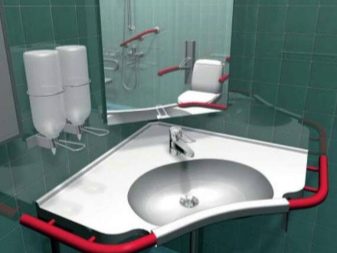
- Glass. Such models are highly decorative, original, effective, can be decorated with painting, volumetric images. There are models of frosted or transparent glass, you can choose any of their shades and shapes. It is easy to take care of such a sink. Glass for sanitary ware is used durable, so you can not be afraid of its excessive fragility.Among the minuses, it can be noted that such a sink needs to be washed daily, since there are many streaks and drops on it after each use. It is impossible to restore the sink, you will have to change it in case of damage. The price for such plumbing is quite high.
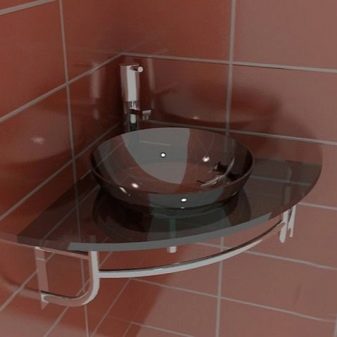
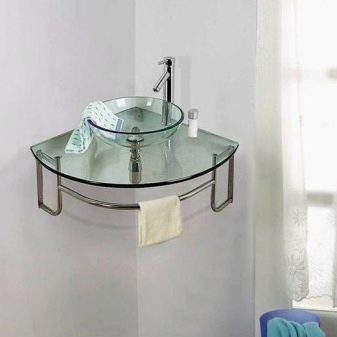
- Natural stone... Non-trivial luxury models, unique in appearance thanks to the pattern created by nature. The texture of such plumbing is rich. Most often they make marble, granite, onyx sinks. They are strong, durable and can be easily restored. But they are very heavy, which makes their installation more difficult, and the price of the models is far from budgetary. In addition, stains often form on them, and it is impossible to clean stone sinks with aggressive abrasives.
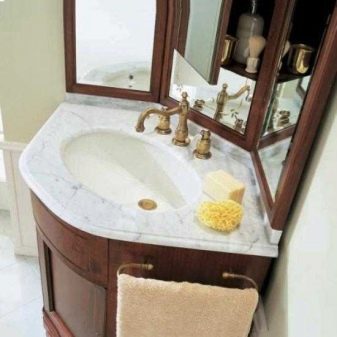
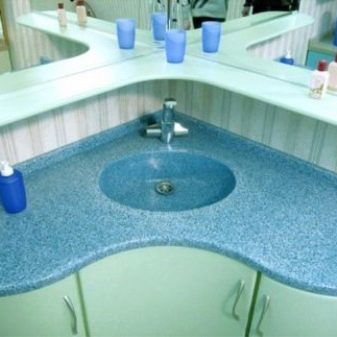
- Fake diamond. These sinks look identical to natural ones, but are lighter and therefore easier to install. They are not afraid of chemistry, durable, and look very beautiful. Stains are easy to wipe off, their restoration is simple. The cost for them is less than for models made of natural stone, but more than for ceramic ones.
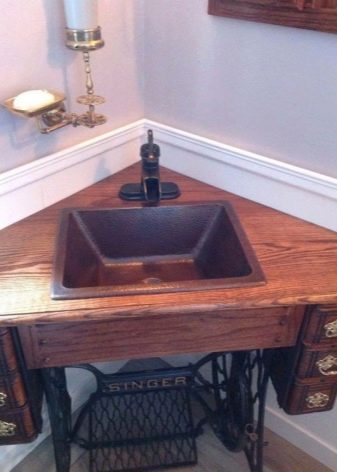

- Wood. This type of plumbing is the most atypical and belongs to the elite segment. The variety of colors, shapes, sizes allows you to choose a sink for every taste. The woody ornament looks original, catchy. For the production of shells, moisture-resistant tree species are used - oak, ash, walnut, cedar, larch. Wooden sinks are lightweight, well suited to classic, eco-style, Provence, rustic country. But they are quite expensive and require very careful care with the use of special products.
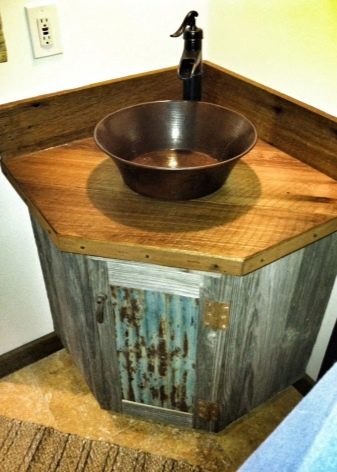
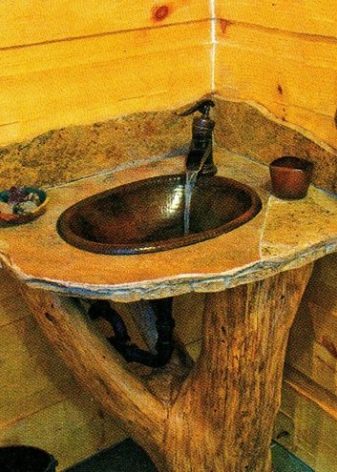
Shapes and sizes
Choosing the size of the bathroom washbasin, pay attention to the following aspects:
- width is selected based on the area of the room, optimal values, comfortable and functional - from 55 to 65 m;
- traditional heights range from 1.3 to 1.5 m;
- the average depth criterion is from 44 to 61 cm.
It will not be very comfortable to wash in sinks with sides less than 25 cm. Small sinks look good in small bathrooms.
In spacious ones, it is better to choose larger models. A large sink in a tiny bathroom will clutter up the space and out of proportion.
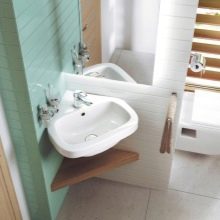
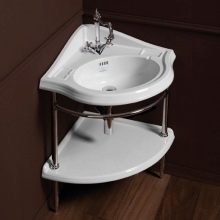
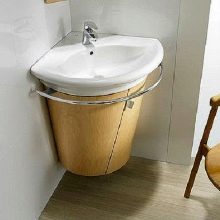
As for the forms, here the modern market offers several basic variations:
- rounded - traditional type, the most widespread and popular;
- triangular - more original shells, but take up a little more space;
- asymmetric - one side of the shell is elongated in relation to the other. This option looks good in modern interiors.
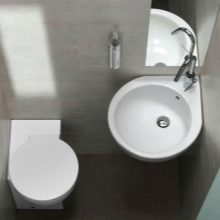
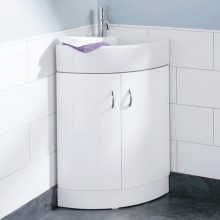
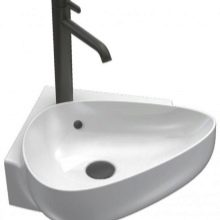
In addition, there are shells of non-standard shapes: shells, circles, vessels and others.
How to choose?
Before purchasing a sink, it is worth analyzing useful recommendations, to avoid post-purchase disappointment:
- the presence of an overflow hole must be mandatory;
- the style of the sink should be combined with the overall design idea;
- the size of the plumbing is important, so be sure to take all the necessary measurements;
- do not forget about the complete set - it is far from always being exhaustively complete;
- specify with what means you can clean your favorite sink;
- think over what will be placed above the sink, and what will be under it;
- is it important for you to hide communications.
Having adopted these tips, you can safely go to buy plumbing.
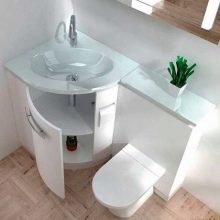
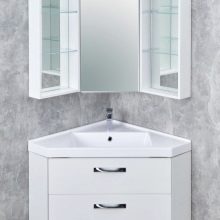
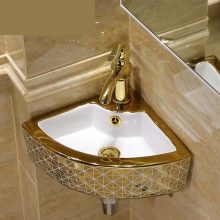
Examples in the interior
Compactness and elegance are a huge advantage of corner models.
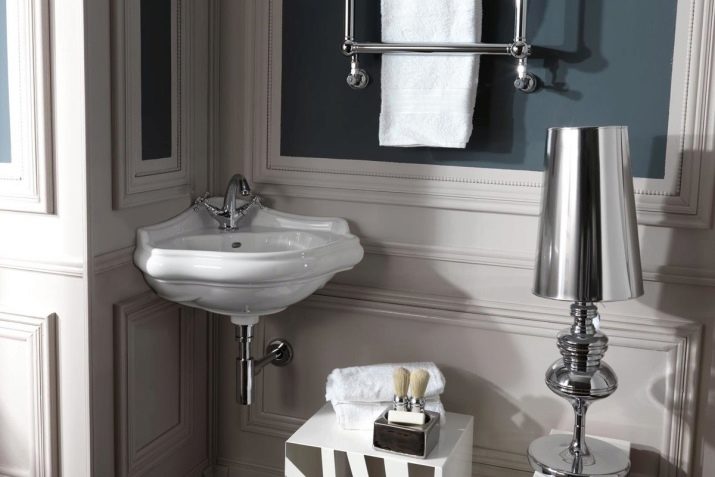
In laconic modern bathrooms, corner sinks look very organic.
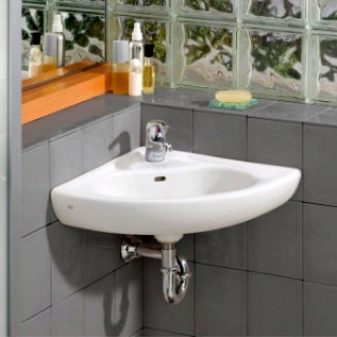

Built-in variations allow you to organize storage space under the washbasin.
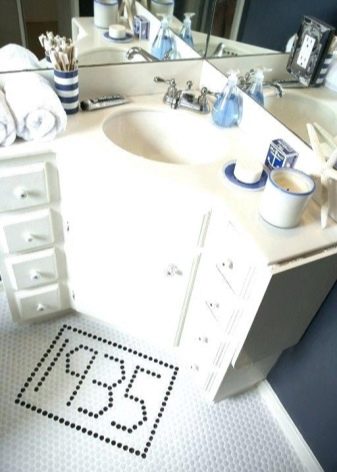
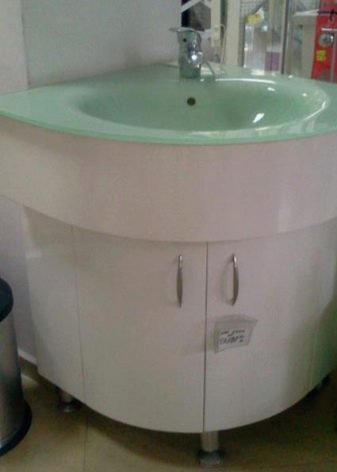
Unusual interior solutions can be easily realized with a stone sink.
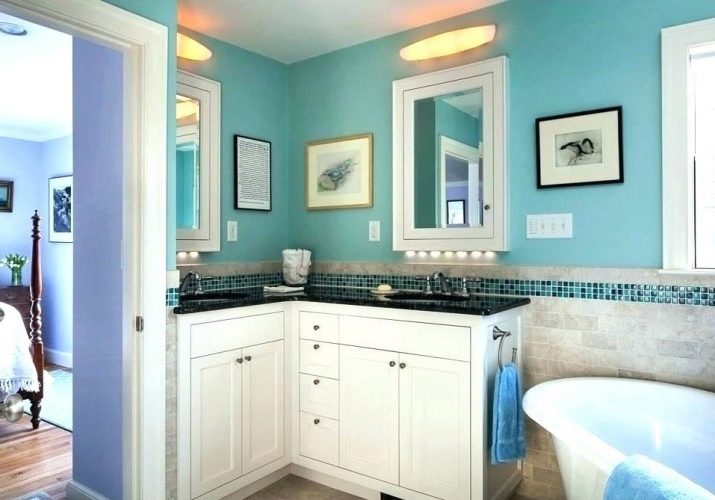
Glass models look airy, light and effective.
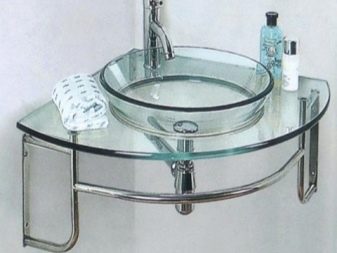
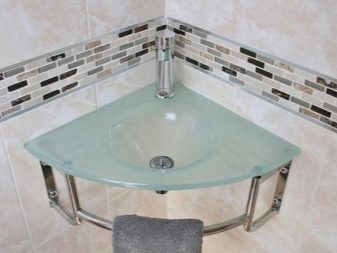
Corner models fit perfectly into almost any style solution.
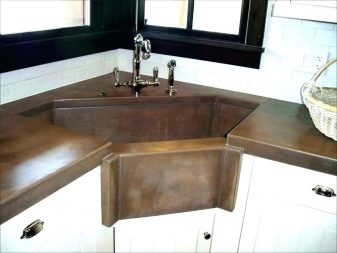
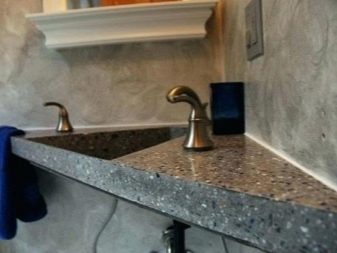
If there is very little space, it is not necessary to give up the dream of creating a non-trivial bathroom design.
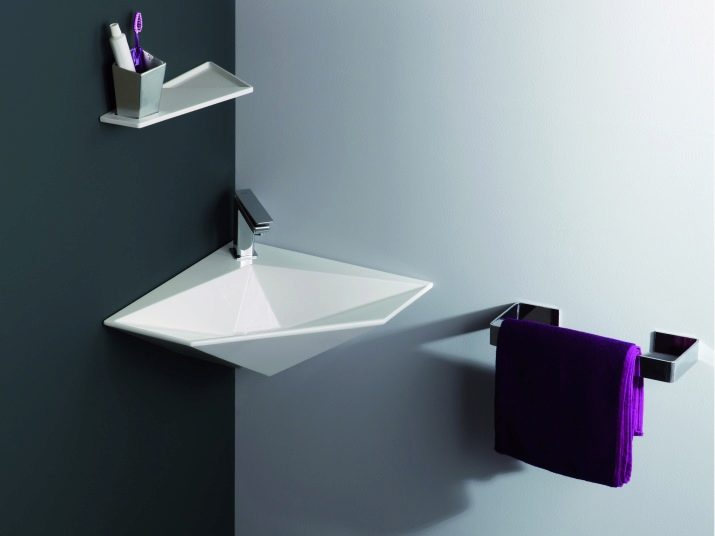
The rich color range of washbasins in modern plumbing stores allows you to choose models for every taste.
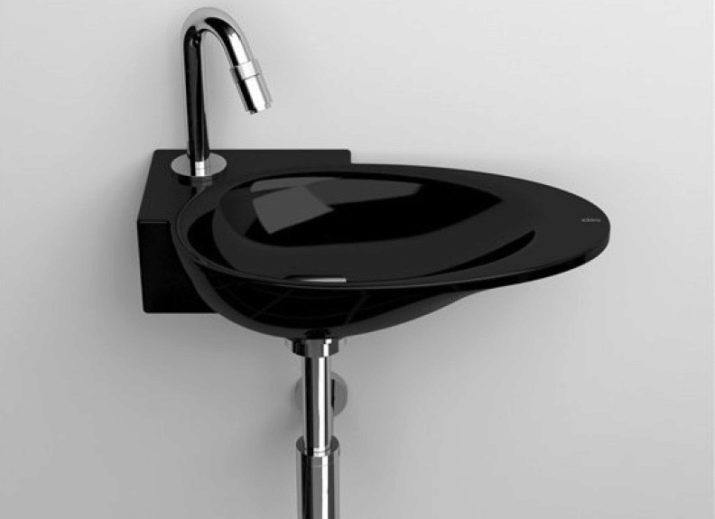
For information on how to choose a bathroom sink, see the next video.








